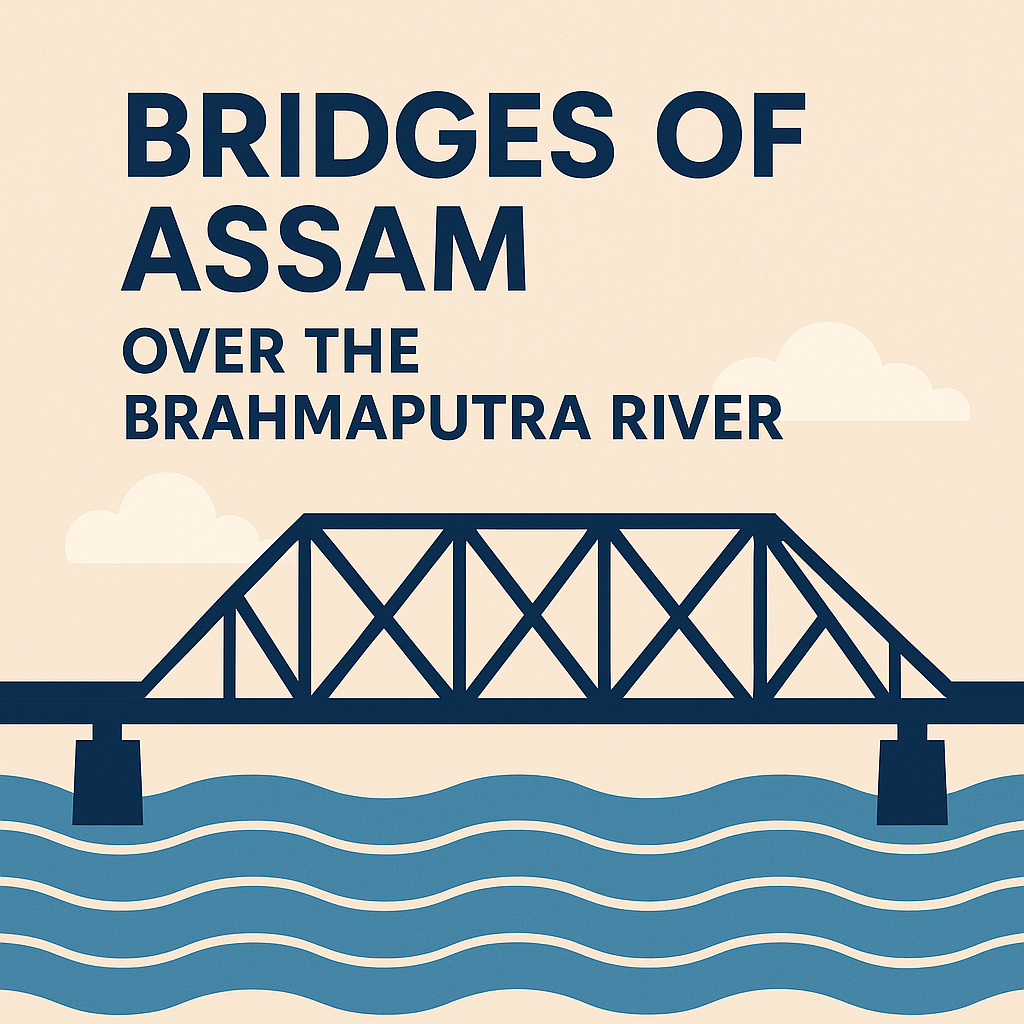Bridges of Assam Over the Brahmaputra River | Smart Study Academy
Bridges of Assam Over the Brahmaputra River
An Insightful Article by Smart Study Academy
Introduction
The Brahmaputra River, one of Asia’s most powerful rivers, flows through the heart of Assam, shaping its geography, economy, and culture. While it is a source of life, it also poses significant barriers to connectivity. Over the years, several iconic bridges have been built across the Brahmaputra, linking the north and south banks and paving the way for growth and integration. This article by Smart Study Academy explores the major bridges over the Brahmaputra in Assam, their significance, challenges, and future prospects.
1. Why Bridges over the Brahmaputra Matter
- Connectivity: Bridges eliminate dependence on ferries, ensuring all-season travel between regions.
- Defence & Security: Strategic infrastructure that enhances troop movement in border areas.
- Trade & Economy: Facilitates faster transportation of goods, reduces costs, and connects markets.
- Social Integration: Links remote districts with urban centres, improving access to services.
2. Major Bridges over the Brahmaputra River
(a) Saraighat Bridge (1962)
- Location: Guwahati
- Features: First bridge over the river; road-rail bridge
- Impact: Historic milestone in Assam’s infrastructural journey
(b) Kolia Bhomora Setu (1987)
- Location: Near Tezpur
- Length: Around 3 km
- Named After: Ahom general Kolia Bhomora Phukan
- Contribution: Boosted central Assam’s connectivity with Arunachal Pradesh
(c) Bogibeel Bridge (2018)
- Location: Between Dibrugarh and Dhemaji
- Type: India’s longest rail-road bridge (4.94 km)
- Importance: Defence-critical; connects Upper Assam with Arunachal Pradesh
(d) Dhola-Sadiya Bridge (Bhupen Hazarika Setu, 2017)
- Length: 9.15 km – India’s longest bridge
- Connects: Dhola (Tinsukia) to Sadiya (Upper Assam)
- Significance: Vital for defence, trade, and local travel
- Named After: Music maestro Dr. Bhupen Hazarika
(e) Naranarayan Setu (1998)
- Location: Near Jogighopa in Western Assam
- Type: Road and rail bridge
- Utility: Connects to West Bengal and Western Assam districts
(f) Upcoming Bridges
- Jorhat-Majuli Bridge: A much-awaited connection to Majuli Island
- Disangmukh-Dhakuwakhana Bridge: To enhance connectivity in Upper Assam
- Twin Bridges at Guwahati: Part of city expansion and decongestion plans
3. Challenges in Bridge Building
- Dynamic river flow and heavy siltation
- Monsoonal flooding delays construction
- Geotechnical instability in riverbeds
- Land acquisition and high construction costs
4. Socio-Economic Impact of the Bridges
- Better access to health, education, and commerce
- Improved connectivity to cultural sites like Majuli and Kaziranga
- Increased tourism and economic diversification
- Faster disaster response during floods and emergencies
5. Government Initiatives and Future Vision
- Infrastructure push under Bharatmala and Gati Shakti schemes
- Focus on border security and regional integration
- Encouraging Public-Private Partnership (PPP) in mega projects
Conclusion
The bridges over the Brahmaputra represent more than steel and concrete—they are arteries of progress and unity in Assam. From the historic Saraighat to the modern marvel Bogibeel and the mighty Dhola-Sadiya span, these structures narrate Assam’s journey of connectivity and development. As Assam continues to grow, these bridges will remain vital links across its greatest river.
© 2025 Smart Study Academy. All rights reserved.
